Over the course of the last week, I’ve had a poll about the potential 2020 Democratic Party nominees open via Google Drive on my Facebook page. The poll was shared on my personal “timeline” as well as the page for this website, The Blue Pyramid. It was then shared by a friend and a friend of a friend. In total, ninety-five people responded.
While my personal top choice for nominee, Elizabeth Warren, fell shy of the majority I predicted her to receive in the 22-candidate field, she absolutely dominated this poll with both the most first-choice and second-choice votes, even though each respondent listed a different nominee for these two choices. Bernie Sanders, Kamala Harris, and Pete Buttigieg all offered moderate to strong showings. Nearly every other candidate performed poorly, notably and especially current national-poll front-runner Joe Biden.
Below are the results, usually tallied into graphic depictions. You can click on each graphic for a larger version.
Question 1: Who is your current #1 choice for Democratic nominee?
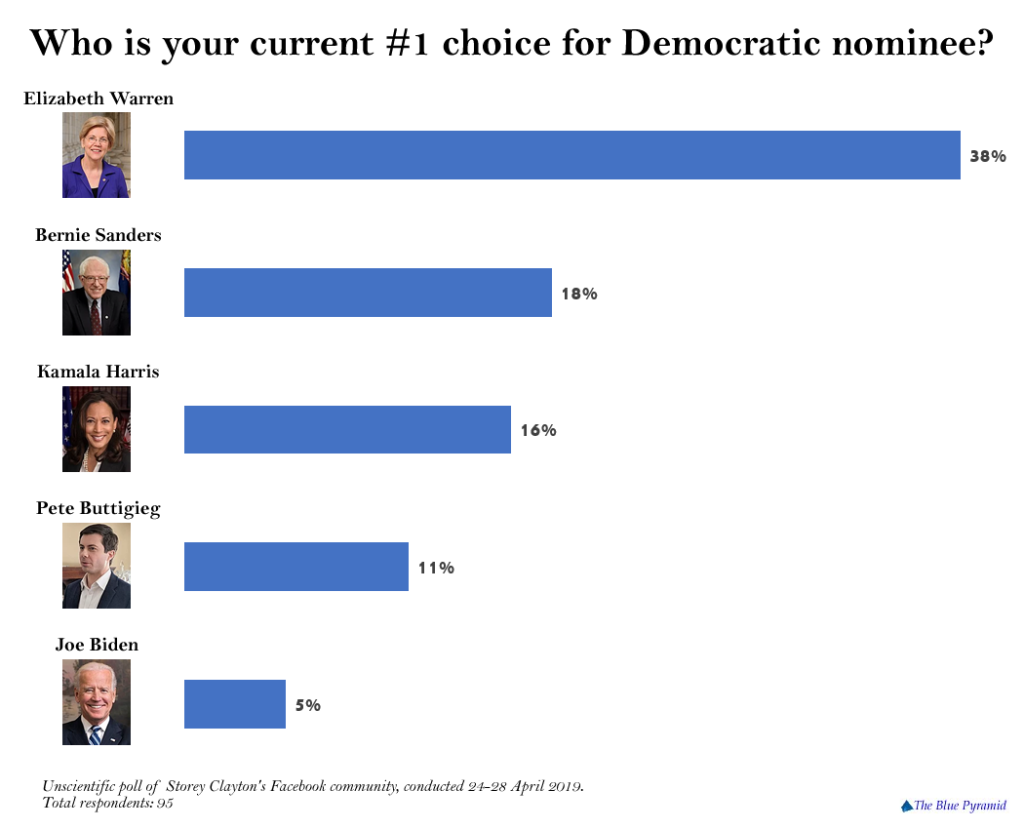
Question 2: Who is your current #2 choice for Democratic nominee?
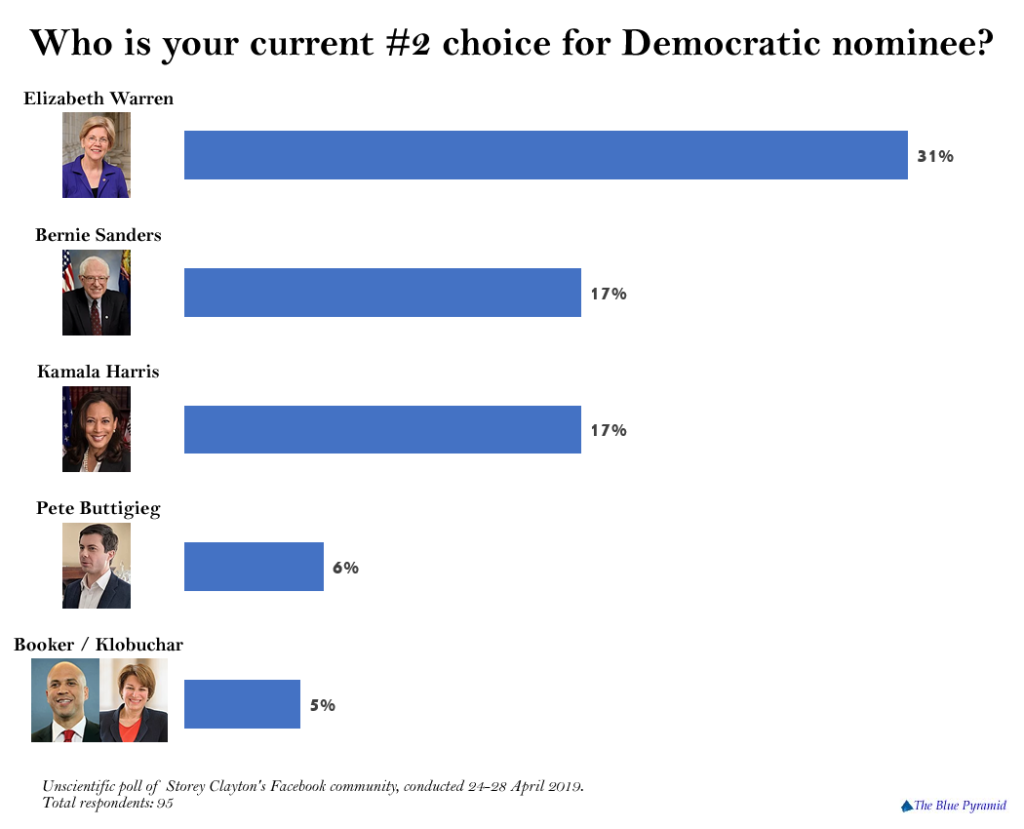
Question 3: Who is your current #3 choice for Democratic nominee?
Pete Buttigieg 11%
[no third choice] 11%
Stacey Abrams 8%
Sanders / Harris / Gillibrand 7% each
Question 4: Is there a candidate you would support if they seemed like they had a better chance of winning? If so, who?
This question produced useless/unusable data. A slim majority (51%) responded I have no such candidate / this question doesn’t apply to my thinking. Of the remaining 49%, many people answered people who had ranked in their top three or even their #1 choice. None of these surpassed 9% and the rough order corresponded to performing well in other questions.
Question 5: Who is your *least* favorite candidate?
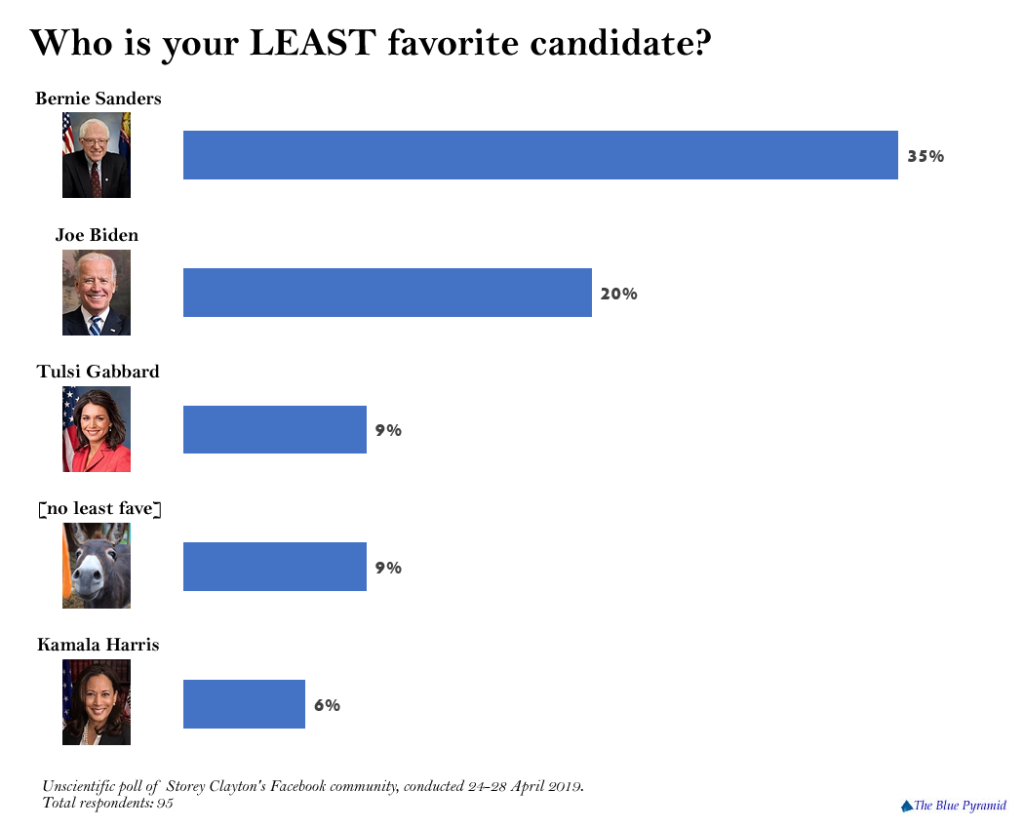
Based on the results of the above questions, I also measured what percentage of respondents included each candidate as one of their top two choices. Warren, needless to say, dominated this metric as well, with more than two-thirds of respondents placing her first or second:
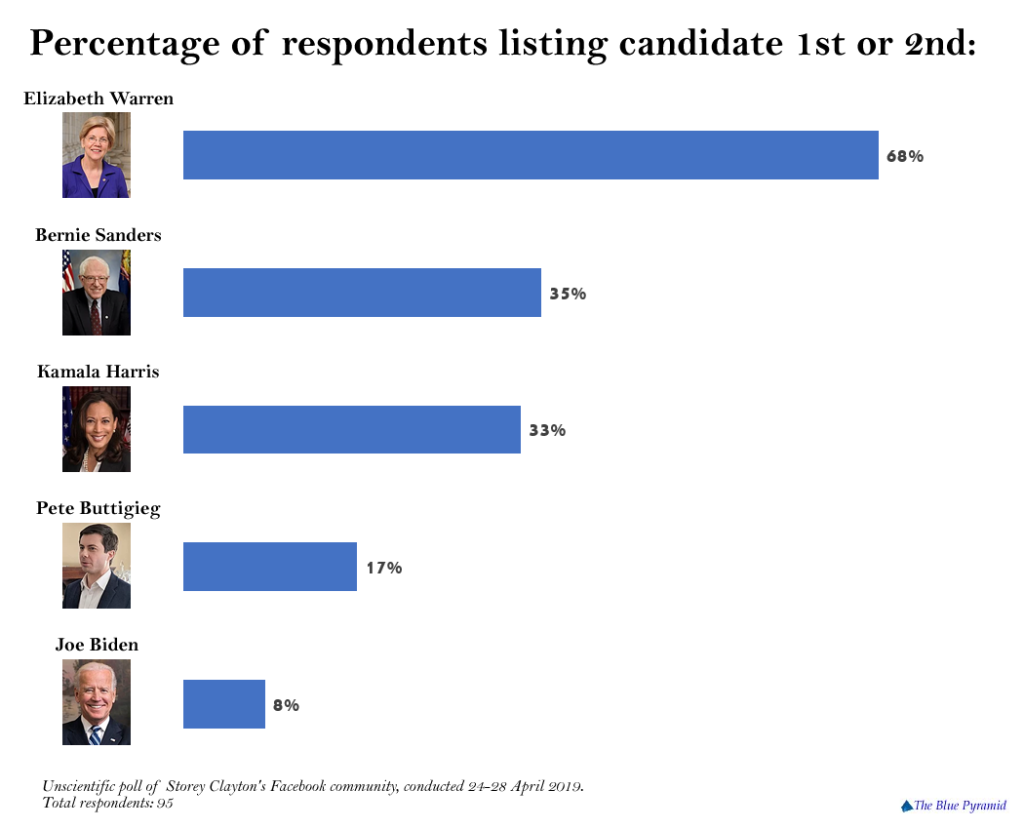
Finally, to measure the least favorite poll against the top three (in a vague proxy of favorability/unfavorability ratings), I devised a “Power Ranking” where candidates were given 5 points for each first-place vote, 3 for each second, 1 for each third, and -2 points for each designation as least favorite candidate. These results not only demonstrate Warren’s dominance in this group of respondents, but actually place Biden below zero:
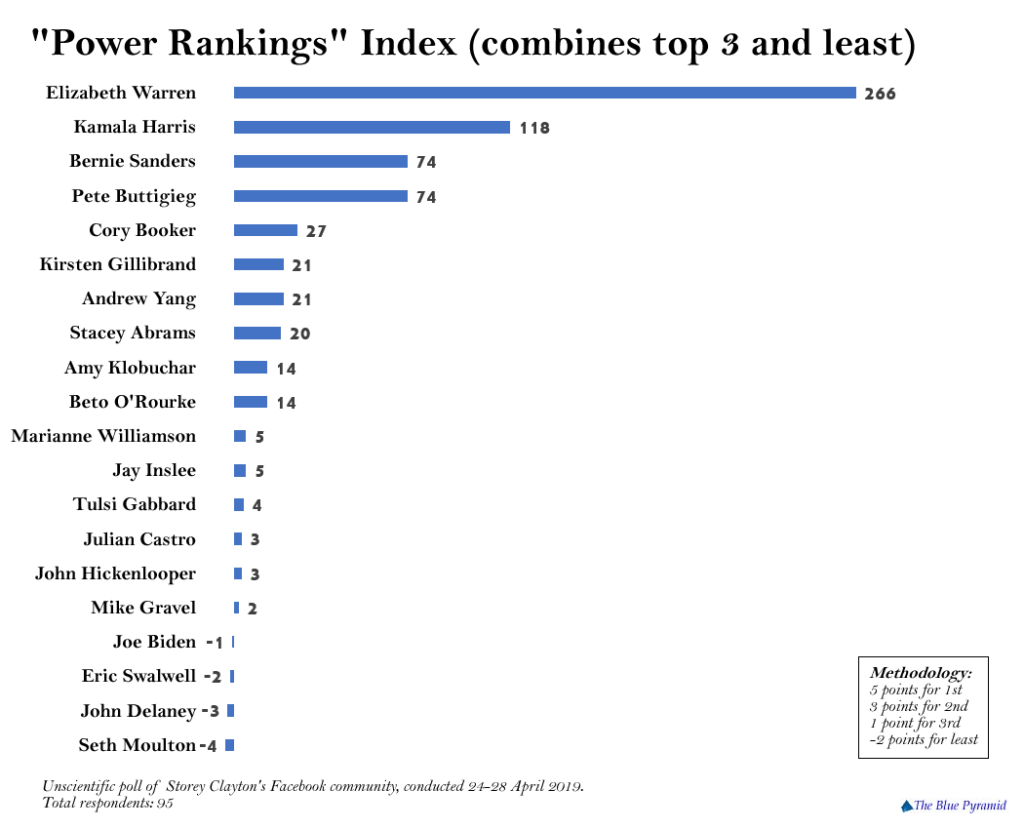
Thank you very much to everyone who participated in this poll. While the results are unscientific, I believe they do accurately reflect what a certain wider community of disproportionately educated and debate-minded Americans, predominantly ages 20-45 think at this time. And while this group has to vote with older and less educated groups as well, I do think this shows a deeper strength for Warren and a deeper weakness for Biden than is currently being discussed in the wider media.
If you would like to discuss these results online, the Facebook discussion will be held here.



